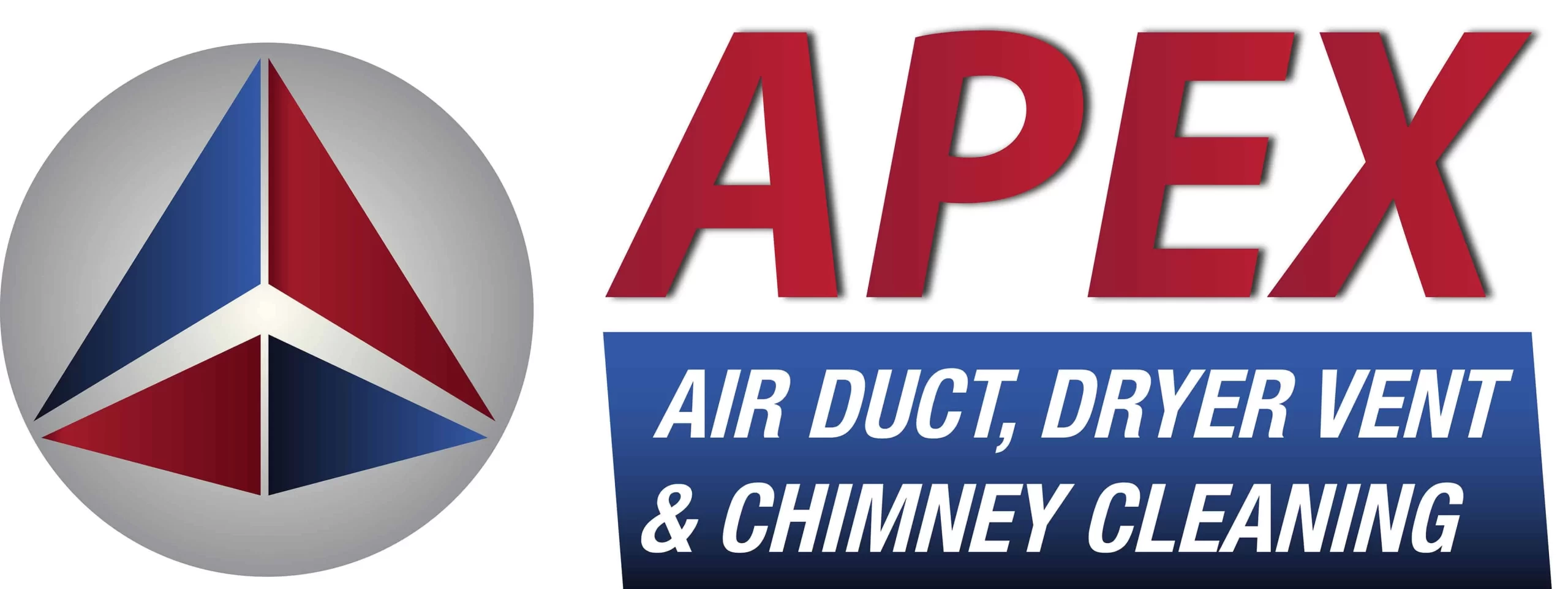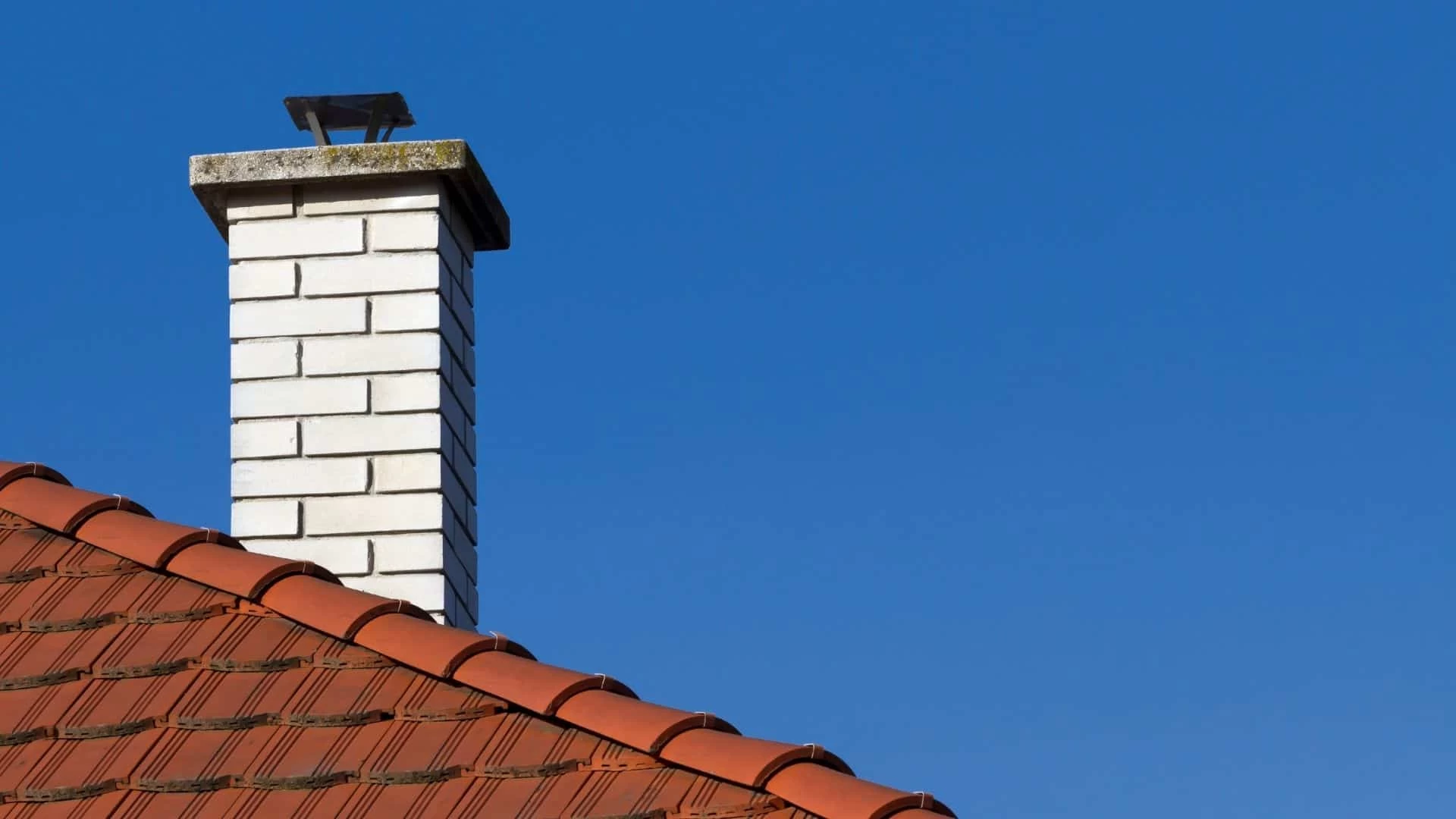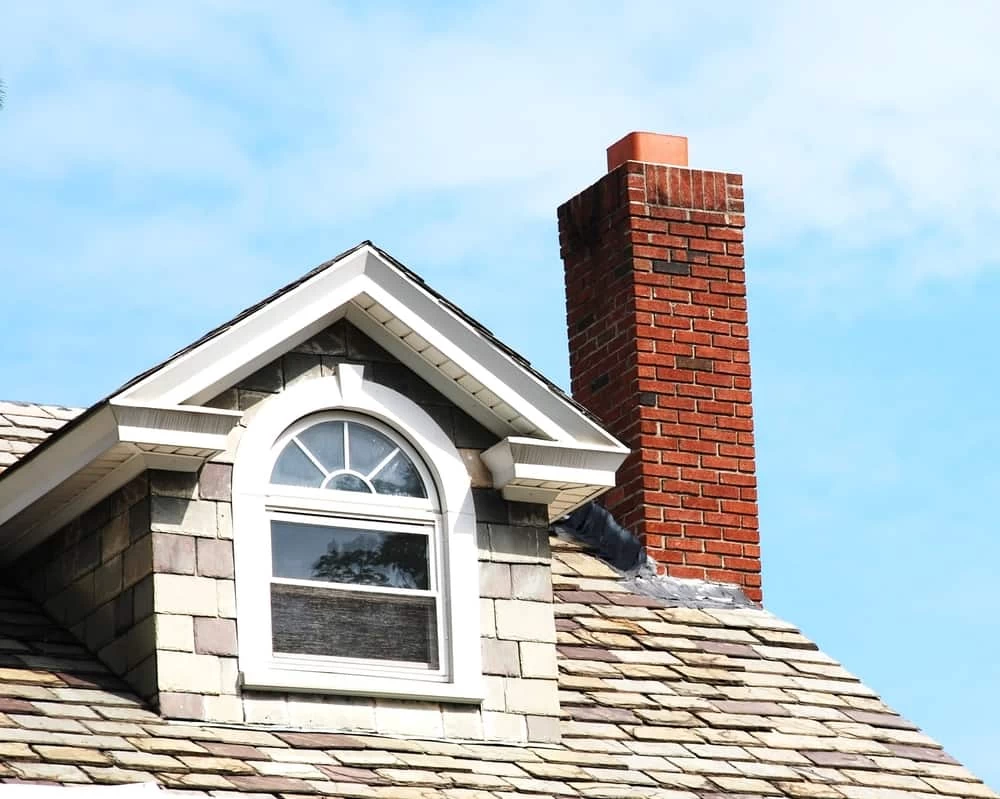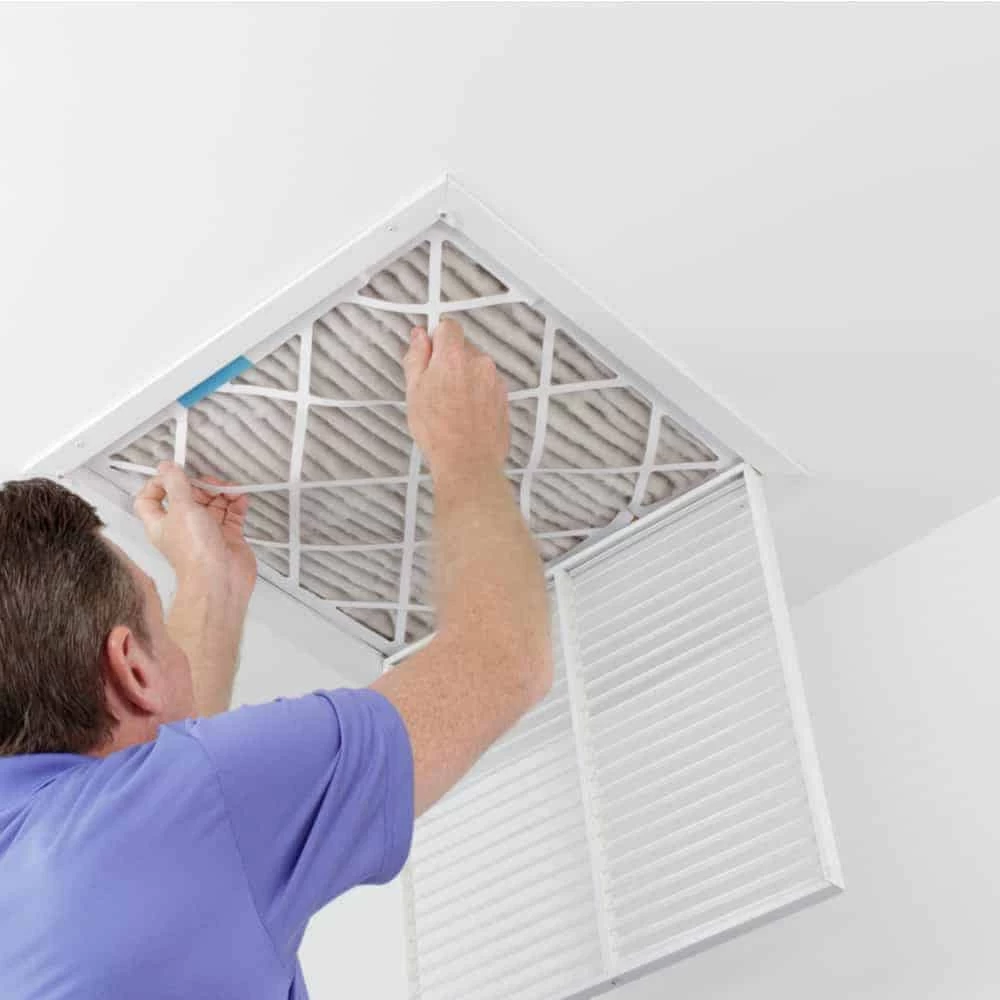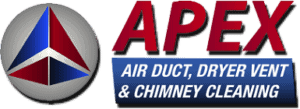Summary:
Visible Cracks and Crumbling Masonry Put Your Home at Risk
When you spot cracks in your chimney’s exterior masonry, you’re looking at more than cosmetic damage. These openings create pathways for water infiltration, and in New Jersey’s harsh freeze-thaw climate, that means serious trouble ahead.
A simple crack in the crown of your masonry chimney can go through a freeze-thaw cycle, which is notorious for expanding the damage. What starts as a hairline crack in September becomes a gaping hole by February, allowing rain, snow, and ice to penetrate deep into your chimney system.
If you notice deteriorating mortar joints or bricks falling apart, it’s time to take action. These are clear signs of structural damage in your fireplace system, and they’re no small issue. The longer you wait, the more dangerous and expensive the problem becomes.
How New Jersey's Freeze-Thaw Cycles Destroy Chimneys Fast
New Jersey’s climate creates perfect conditions for rapid chimney deterioration. Water damage is a threat no matter what time of the year it is, but it is especially dangerous in the winter because of the freeze-thaw process. If your masonry has not been properly waterproofed (or it’s been some time since it was last done), any moisture that comes into contact with your brickwork will be absorbed into the material. When this water freezes, it expands, forcing the outer layers of the brick to crack and flake, leaving your entire system vulnerable for additional damage.
This destruction doesn’t happen gradually. Each freeze-thaw cycle accelerates the damage exponentially. A small crack you notice in October can become a major structural problem by December, potentially requiring thousands in emergency repairs when contractors charge premium winter rates.
The masonry damage triggers a cascade of problems throughout your chimney system. Deteriorated mortar joints on the chimney’s exterior are entry spots for water. Proper mortar joints have no gaps or missing mortar and are shaped in a way that directs water out of the joint. When mortar deteriorates from exposure to weather, it becomes much more absorbent.
You’ll often first notice this damage as small pieces of brick or mortar scattered around your chimney’s base after storms. Don’t dismiss these as normal wear. They’re early warnings that your chimney’s structural integrity is failing. Spalling describes the flaking, popping, or peeling of masonry around the bottom of your chimney from the outside. If left untreated, spalling can lead to your chimney collapsing.
White Staining Reveals Hidden Water Damage
That chalky white residue on your chimney’s exterior isn’t just unsightly—it’s a critical warning sign demanding immediate action. White stains, or efflorescence, appear when water infiltrates the chimney and water-soluble salts migrate to the brick surface, crystallizing as the water evaporates. This often signals water damage due to cracked masonry, poor waterproofing, or damaged chimney components.
Many homeowners mistake efflorescence for normal aging, but it’s actually your chimney’s distress signal. White staining on the exterior bricks (efflorescence) is a warning sign of water infiltration and should be addressed within 3–6 months. The longer you wait, the more extensive and expensive the repairs become.
This white staining means water is already inside your masonry, working its way through the entire system. This staining is usually caused by excessive moisture, leading to the brick and mortar joints deteriorating. If this happens, your chimney may start to lean or crumble. In New Jersey’s climate, this deterioration accelerates rapidly once it starts.
What makes this particularly dangerous is that visible staining represents only a fraction of the actual water damage occurring inside your chimney. By the time you see efflorescence on the exterior, water has likely been compromising internal structures for months. The masonry, both bricks and mortar, of a chimney has similar problems to the crown in that freezing and thawing over time can weaken them to leaks. We can help you decide how to repair a chimney with damaged masonry.
Professional waterproofing can stop this process, but only after addressing the underlying structural issues that allowed water infiltration. Ignoring white staining is like ignoring a ticking time bomb that will explode into major repairs during the worst possible time—the middle of winter when you need your heating system most.
Interior Signs Your Chimney System Is Failing
Sometimes the most critical chimney problems announce themselves from inside your home. Water stains on walls or ceilings near your fireplace, musty odors after rain, or rust on your damper all signal that your chimney’s protective barriers have failed completely.
Moisture, leaks, or water staining on walls or ceilings around the chimney. Musty or dank odors, especially after it rains. Cracked or spalled interior or exterior masonry are interconnected signs of a compromised system demanding immediate professional attention.
Poor Draft and Smoke Problems Signal Dangerous Conditions
When your fireplace doesn’t draw properly or smoke enters your room instead of going up the chimney, you’re facing more than an inconvenience. Poor airflow and smoke backdrafting contribute to 25% of home heating fires, posing a significant safety risk. These symptoms often indicate blockages, damaged flue liners, or structural problems that compromise your chimney’s ability to safely vent dangerous gases.
Poor draft stems from multiple issues, each requiring different solutions. Animals may have built nests during the off-season, or storm debris may have accumulated. More seriously, your flue liner may have deteriorated, creating restrictions that prevent proper airflow. Common signs include a strong smoky smell, difficulty lighting fires, visible soot buildup, and poor airflow. If you notice any of these, it’s time to schedule a chimney sweep.
The danger extends far beyond inconvenience. Carbon monoxide leaks through cracks in flue lining and into your home. Even small amounts can make you and your family sick. Carbon monoxide is odorless and colorless, making it impossible to detect without proper equipment. What feels like poor draft could actually be a life-threatening situation developing in your home.
Draft problems also create fire hazards. There is also the risk of a chimney fire turning into a house fire. Highly combustible creosote can leak through even small cracks in the clay lining. Once ignited, a creosote fire can find its way through cracks, and dangerously increase chimney heat. Or the flames can simply penetrate cracks in the mortar and lining and ignite a home.
Don’t assume these issues will resolve themselves or that you can work around them. Each use of your fireplace with compromised draft increases the risk of carbon monoxide poisoning or fire. Professional inspection quickly identifies the source of draft problems and provides solutions before they become winter emergencies.
Rust and Corrosion Indicate Advanced System Failure
Rust on your damper, firebox, or other metal components signals that moisture has penetrated your chimney system and is causing ongoing damage. This isn’t surface rust from normal humidity—it’s evidence of persistent water infiltration threatening your entire system’s integrity.
Signs that your chimney may be suffering from water damage include: White, chalky deposits (efflorescence) appearing on exterior bricks and rust forming on the damper or other metal components. Addressing these issues early is essential to prevent further damage and costly repairs. Rust indicates that water is regularly entering your system, creating conditions for accelerated deterioration.
Rusted dampers often fail to open or close properly, compromising your ability to control airflow and potentially creating dangerous backdraft conditions. Some fireplace water leaks are so significant that the damper gets rusty, causing it not to open or close properly. A malfunctioning damper can’t properly seal your chimney when not in use, allowing heated air to escape and dramatically increasing your heating costs.
The corrosion process doesn’t stop with visible metal components. The primary culprit for chimney breakdown is the acidic moisture that comes from condensed flue gases. This acidic moisture attacks the chimney from the inside. Years of normal use with hot and cold cycles and seasonal weather conditions all take their toll on a chimney.
Modern high-efficiency heating systems create additional challenges. Once flue gases drop to 120 degrees F, condensation begins. Herein lies the side effect of high efficiency furnaces – excessive moisture in the flue. Traditionally built chimneys with clay liners will not last under this moisture assault. This means even newer homes can experience rapid chimney deterioration without proper maintenance.
Rust and corrosion represent advanced stages of chimney problems. By the time you see these signs, significant damage has already occurred throughout your system. Professional assessment can determine the extent of damage and create a repair plan that addresses both symptoms and underlying causes before they lead to complete system failure.
Protect Your Family and Home This Winter
Recognizing these warning signs early saves you thousands in emergency repairs and protects your family from serious safety hazards. Don’t wait until it’s too late to address fireplace issues. We strongly recommend scheduling a professional inspection if you notice any of these warning signs. A certified chimney sweep can thoroughly evaluate your fireplace system and identify potential hazards before they become dangerous problems.
Prevention costs far less than emergency repairs. Professional inspection and maintenance ensure your chimney operates safely throughout winter, giving you peace of mind and reliable heating when you need it most.
When you need expert chimney repair and inspection services in New Jersey, contact Apex Air Duct Cleaning & Chimney Services. With 40+ years of experience and rare triple certification, we’re New Jersey’s trusted choice for comprehensive chimney safety and repair.
